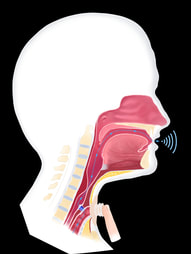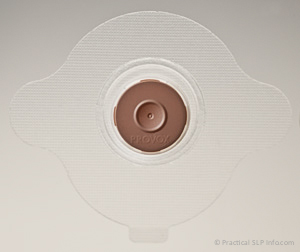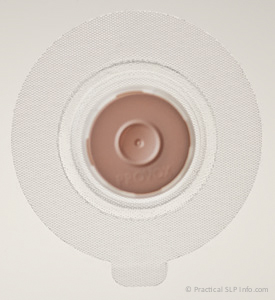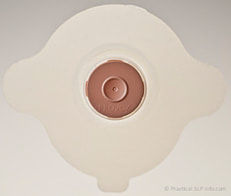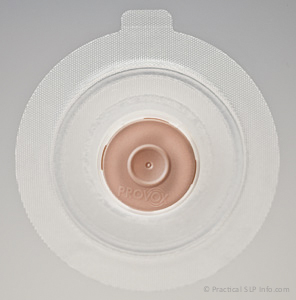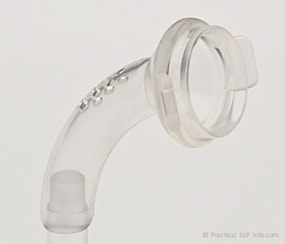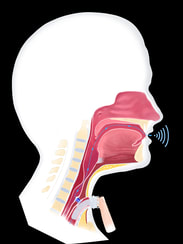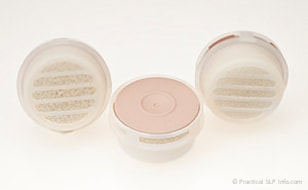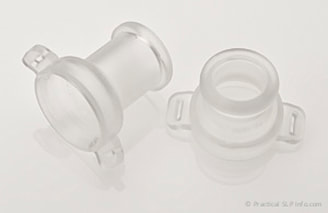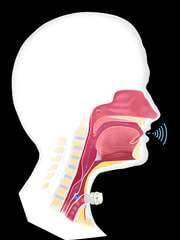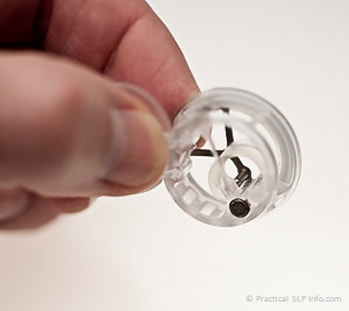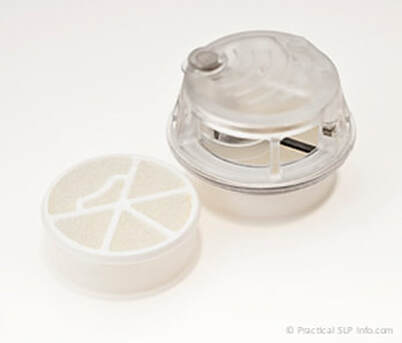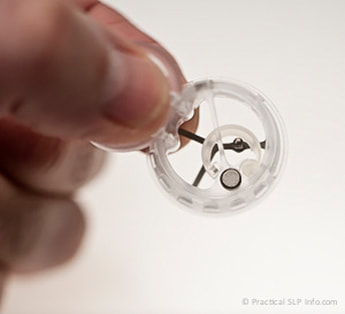It's All About Airflow
Making a voice, with or without a larynx, is a matter of simple physics. Everything can be in place to allow you to make a voice, but without airflow, no sound will be produced. And, the better the airflow (think: speed and volume), the better the tissues will vibrate. Want to get louder? Push more air!
Imagine your throat is a muscular tube (it is!). If you tighten up the tube, air will have a harder time passing through there. If you keep the tube loose, open and relaxed, the air will flow much better.
- Relax: Many times, the anxiety over not being able to speak can cause you to be tense. Tension in the muscles of the throat can make it difficult for the air to escape through your mouth. This will cause you to produce less and less speech.
- Deep Breaths: You cannot power a good voice without enough air. Your lungs hold the “charge” for your speech. Without enough air in the lungs, you will not be able to sustain a voice for very long. Be sure to take a nice deep breath before beginning to speak.
- Speak From the Diaphragm: There should never be any muscle tension in the throat when speaking. To get a better, louder voice, push the air better: use your diaphragm! Use your stomach muscles to help push the air from your lungs into the throat. The SLP staff can help you perfect this technique.
Lubrication
The tissues in the throat are designed to be moist. Proper moisture helps ensure the surfaces do not stick together when vibrating against each other. Moisture also helps them to vibrate when the surfaces are moist and slick.
When speaking, air is constantly flowing through these tissues that are designed to be moist and supple. The flow of air can cause them to become dry and even sticky. Therefore, it is important to add moisture and lubricate this region to ensure the best voice possible.
Drink water
Water is very effective in lubricating the tissues used to produce speech. With a constant flow of air through those tissues, it is easy for them to become relatively dry which may impact their ability to vibrate well and produce your best voice. Drinking water can help restore moisture to this region and may effectively improve your voice.
This can be especially helpful when first learning to speak with the voice prosthesis. It’s normal to tense your throat when first learning to speak. Although this is the opposite of what you should do (Think: relax), sometimes it’s hard to control. When you swallow water, the water must pass through those same muscles in your throat that are tensing up. As swallowing is something done without conscious thought or effort, the body takes over, relaxing the muscles necessary to swallow well. Once these muscles are relaxed, you may notice your speech returns as well. Follow this with a “Reset” described below.
This can be especially helpful when first learning to speak with the voice prosthesis. It’s normal to tense your throat when first learning to speak. Although this is the opposite of what you should do (Think: relax), sometimes it’s hard to control. When you swallow water, the water must pass through those same muscles in your throat that are tensing up. As swallowing is something done without conscious thought or effort, the body takes over, relaxing the muscles necessary to swallow well. Once these muscles are relaxed, you may notice your speech returns as well. Follow this with a “Reset” described below.
Don’t Stress!
Muscle tension in the throat can be the worst enemy when speaking with a voice prosthesis. In order to allow the air to pass from your throat to the mouth for speech, it must have an open pathway. Muscle tension in the throat can serve to squeeze down along that pathway and make it very difficult, if not impossible, to speak.
- Relax: Many times, the anxiety over not being able to speak can cause you to be tense. Tension in the muscles of the throat can make it difficult for the air to escape through your mouth. This will cause you to produce less and less speech.
- Drink Water: This can be especially helpful when first learning to speak with the voice prosthesis. It’s normal to tense your throat when first learning to speak. Although this is the opposite of what you should do (Think: relax), sometimes it’s hard to control. When you swallow water, the water must pass through those same muscles in your throat that are tensing up. As swallowing is something done without conscious thought or effort, the body takes over, relaxing the muscles necessary to swallow well. Once these muscles are relaxed, you may notice your speech returns as well. Follow this with a “Reset” described below.
Water is also very effective in lubricating the tissues used to produce speech. With a constant flow of air through those tissues, it is easy for them to become relatively dry which may impact their ability to vibrate well and produce your best voice. Drinking water can help restore moisture to this region and may effectively improve your voice.
- “Reset”: Articulation, or moving your mouth and throat muscles to pronounce words can often create some excess tension in the throat muscles used for producing a voice. In this case, STOP TALKING! Relax…take a deep breath and say “ahhhhhhh.” Hold the “ah” for as long as you can, focusing on keeping your throat muscles relaxed and paying attention to how your throat feels when making a voice. In our office, we refer to this as a “reset.” Using this method can be helpful whenever you notice feeling extra tense in your throat.
In some cases, more aggressive medical intervention may be required to help achieve the best voice possible. The SLP staff will determine if further treatment is appropriate and can thoroughly discuss these options with you. If you feel you are having more difficulty speaking that you should, or notice speaking is becoming more and more difficult, be sure to mention this to the SLP staff so this can be further evaluated.
Seal Check!
Few things can interfere more with achieving your best voice as much as a poor seal. If you wear an adhesive housing, be sure to change your adhesive as necessary when the seal is no longer effective. Below, however, are guidelines for ensuring the best seal possible.
Read more about how to apply an adhesive housing here.
Regardless of the method you use to seal your tracheostoma, you should be sure no air is leaking from the stoma when you are trying to speak. The following are the most common ways to seal your tracheostoma during voicing.
methods to use to troubleshoot
Finger OcclusionIf you are using your finger to seal against your stoma, be sure you are fully covering the stoma with the finger.
It is also important to not block the opening to the prosthesis, preventing air from entering the prosthesis when you cover the stoma. The SLP staff can assist you with this technique if necessary. |
Adhesive Housing with HME Cassette
Be sure the adhesive has no leaks in the seal. A poor adhesive seal is a very common problem when air leaking occurs. If the seal is good, ensure the center of the HME cassette is being fully compressed. The SLP staff can assist you in improving the seal of the adhesive and/or properly compressing the HME cassette.
Larytube with HME Cassette
Leakage from around the Larytube can be a common issue, although the SLP staff can help improve the seal in many cases.
If no leakage around the tube is noted, ensure the center of the HME cassette is being fully compressed.
If no leakage around the tube is noted, ensure the center of the HME cassette is being fully compressed.
Larybutton
Because the Larybutton is self-retaining, it is important it fits properly, especially when making a voice. Although the SLP staff should properly size/fit the Larybutton, changes to your stoma shape/size over time are possible. If you notice the Larybutton is leaking air when trying to speak, the SLP staff can be helpful in determining if you need a change in this regard.
HELPFUL HINT: When pressing against the throat to seal the stoma, regardless of the method used, it is very important that while you use enough pressure to effectively seal off the stoma, be sure NOT to use so much pressure that the airflow through the throat is restricted. Pressing too hard against the throat can prevent the air from moving through the throat and into the mouth for speech.
FreeHands Device
Be sure the adhesive has no leaks in the seal. A poor adhesive seal is a very common problem when air leaking occurs. Also be sure the valve is positioned in the “talk” position. In order to achieve voicing with this device, it is very important this be properly fitted. If this has all been done and you are noticing persistent air leakage, contact the SLP staff for further assistance.

